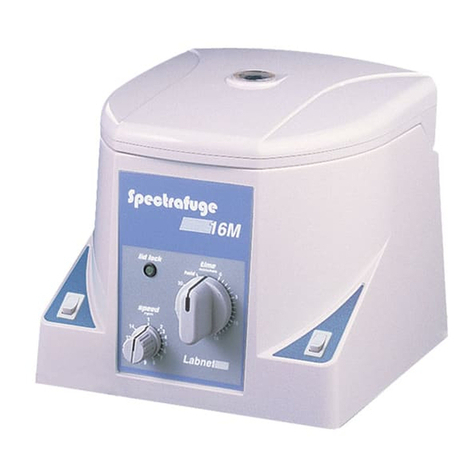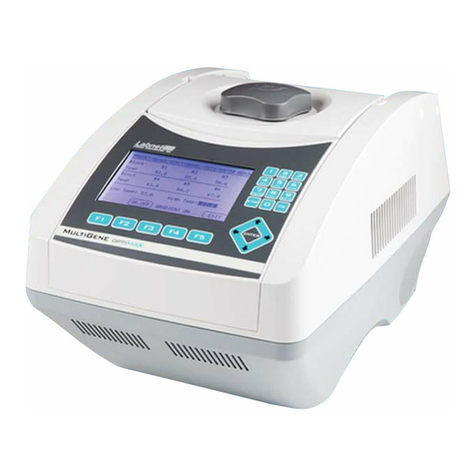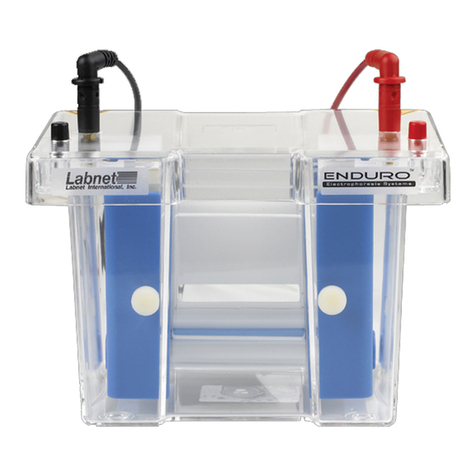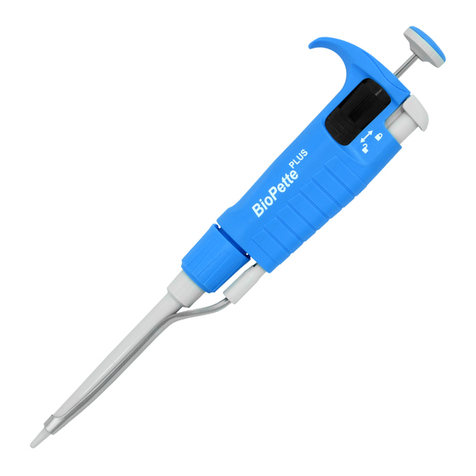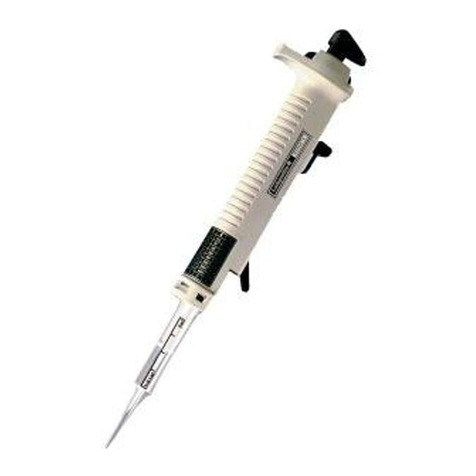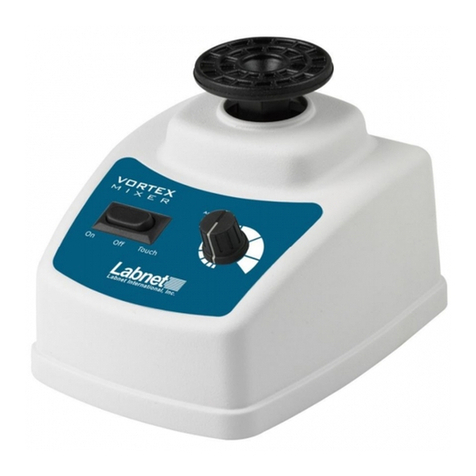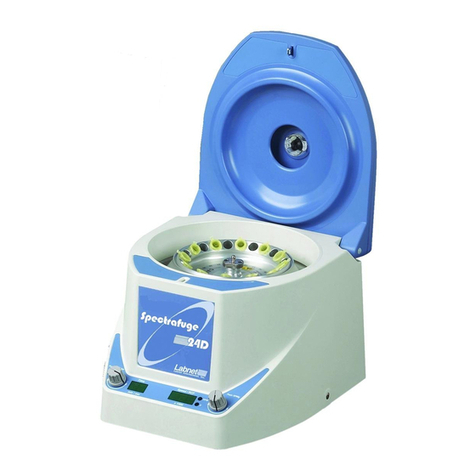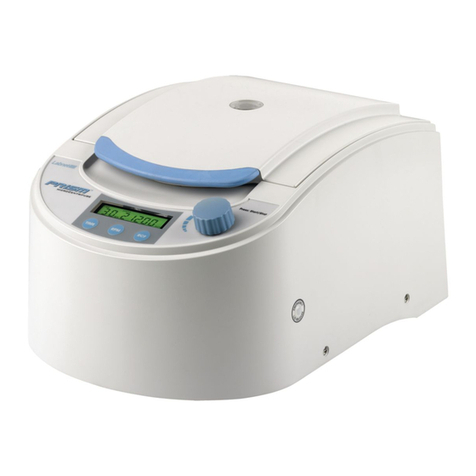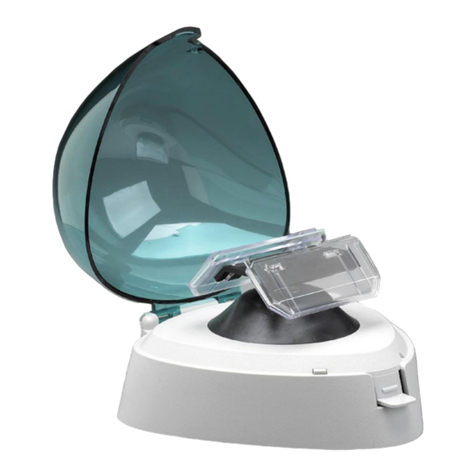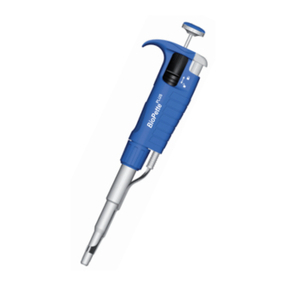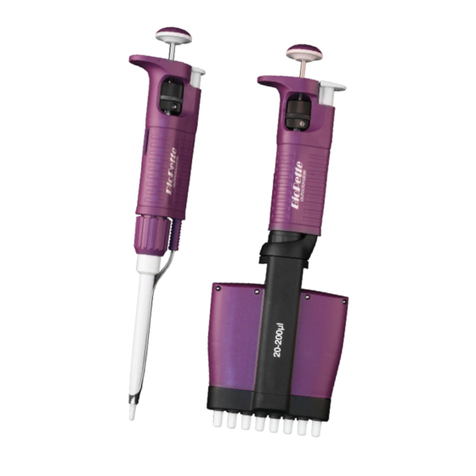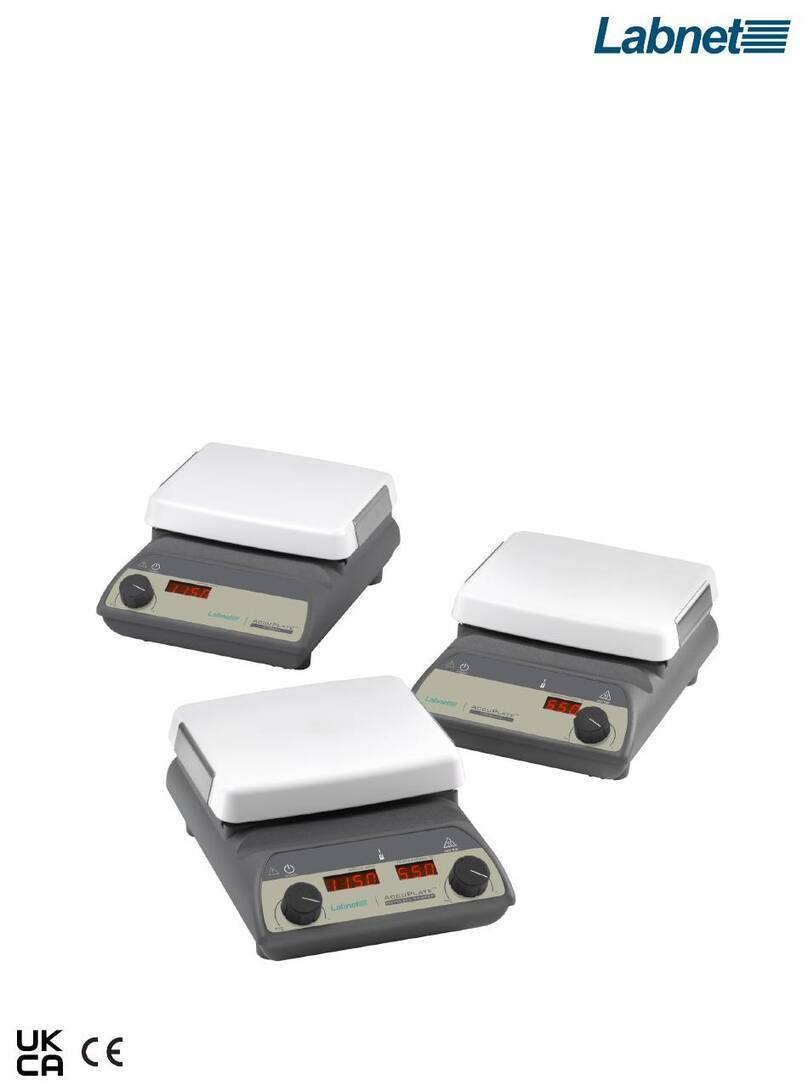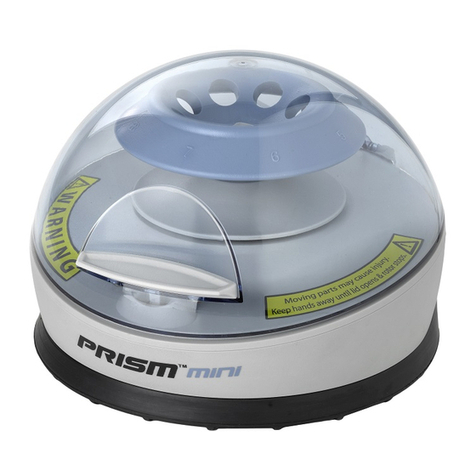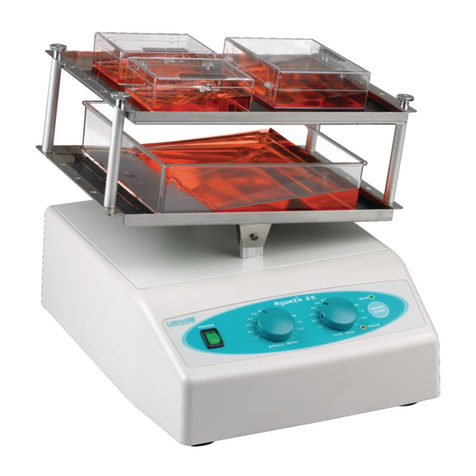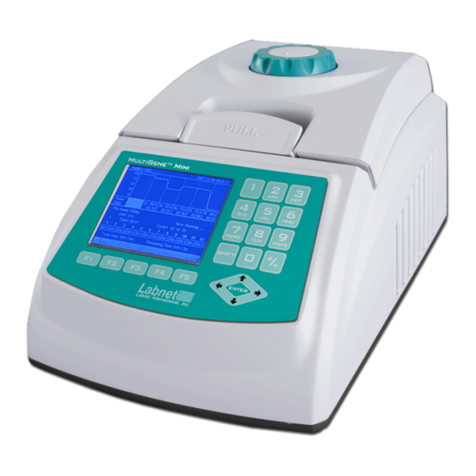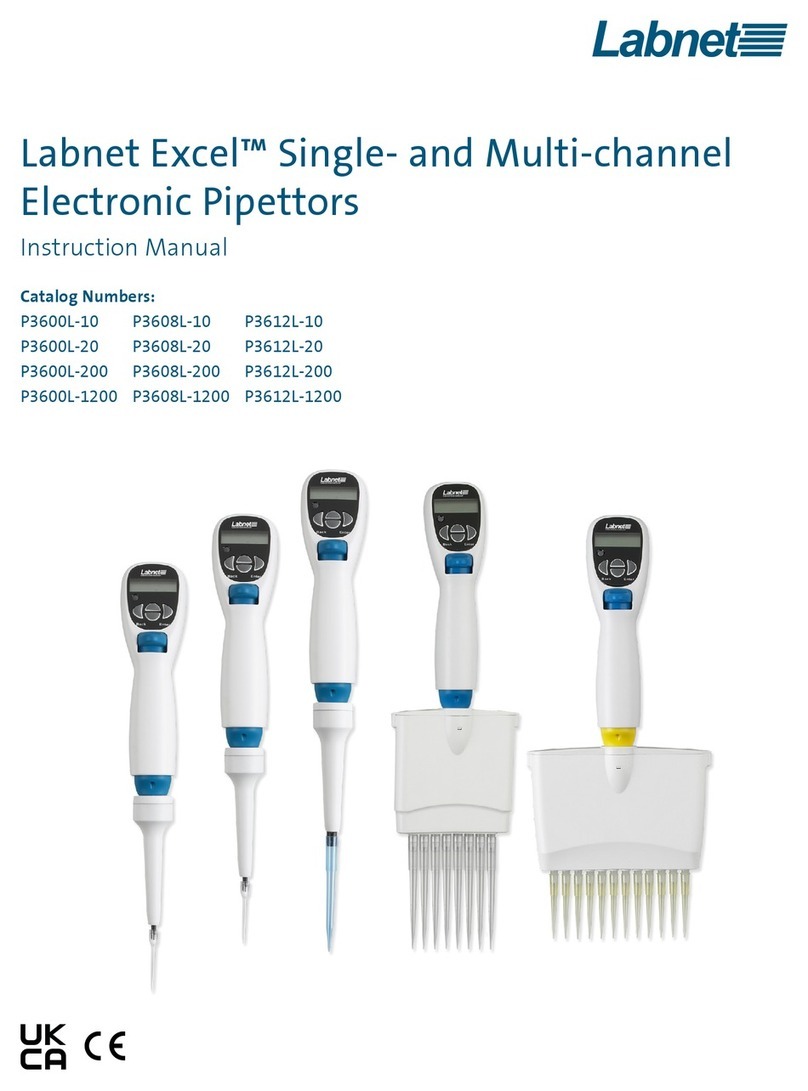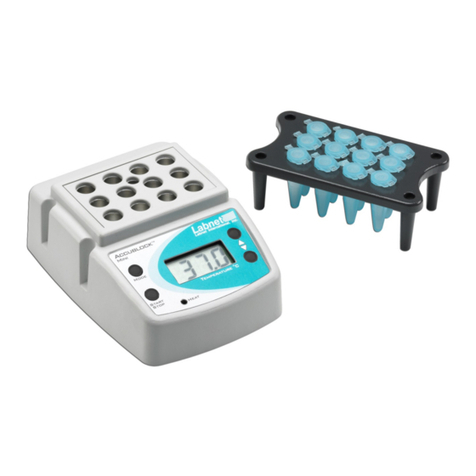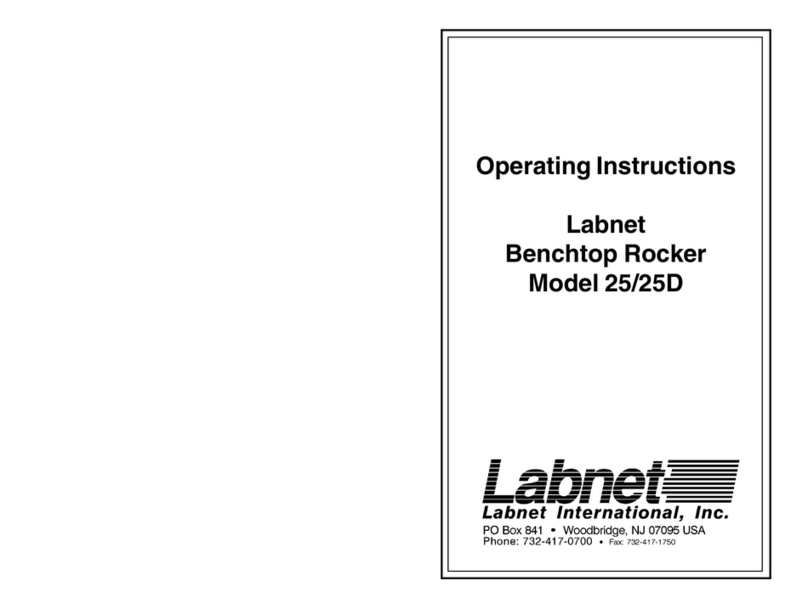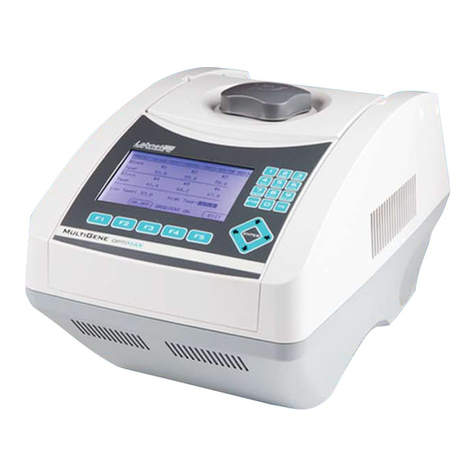3
4 GETTING STARTED
Before operation be sure that the pipette controller batter is charged. To check the batter
charge, press the aspiration button (fig. 1A) and check the low batter indicator light. If the
indicator does not light, the pipette controller is read for use.
If the low batter indicator is lit, the pipette controller must be charged before use.
Alternativel , the charger can be connected and the FASTPETTE can be used while charging
.
Onl the original charger should be used.
The line voltage must conform to the specification on the charger.
Follow the instructions in section 8 of this manual for charging the FASTPETTE.
5 ASPIRATING AND DISPENSING LIQUIDS
Attaching a pipette
Before attaching a pipette, check for damage. The pipette should be free of dents,
chips and sharp edges on the section that is held by the pipette controller. Be sure
that this section is dry.
Hold the pipette close to the end that is to be inserted in the pipette controller and push it
into the pipette holder until resistance is felt (fig. 2A). Do not appl excessive force as this
ma cause the pipette to break and injure the user. A pipette that is correctl seated in the
holder will not tilt to the side.
After seating the pipette, hold the pipette controller so that the pipette is in a vertical position,
pointing downward. It is possible to la the pipette controller on the bench stand with
a pipette attached. It is not recommended to leave a pipette attached to the device for an
extended period of time (ie overnight).
Do not lay the pipette controller on its side while there is liquid in the pipette.
Filling the pipette
Before aspiration is started, set the suction speed using the HIGH/LOW switch (fig. 1C).
• HIGH position – fast aspiration
• LOW position – slow aspiration
It is recommended to choose the LOW position for pipettes with a volume of up to 5 ml, and
the HIGH position for pipettes with a volume greater than 5 ml. Holding the pipette con-
troller so that the pipette is in a vertical position, immerse the pipette end in the liquid to be
drawn up (fig. 2B) and pres the aspiration button gentl . The filling speed depends on how
much pressure is applied to the aspirating button. The more pressure applied, the faster the
liquid is drawn up.
It is recommended to draw a slightl greater volume of liquid than is required. Adjust the
aspiration speed while filling as to not overfill the pipette.
Setting the volume
After filling the pipette, wipe the tip with absorbent paper to remove an liquid from the outside
surface of the pipette. The volume can then be precisel adjusted. Gentl press the dispensing
button (fig. 2C) until the meniscus of the liquid in the pipette aligns exactl with the required
volume mark. The speed of aspiration can be adjusted b var ing the pressure applied.
4
Emptying the pipette
Tilt the receiving vessel and place the pipette tip in contact with the vessel wall. Gentl press
the dispense button (fig. 2C). The speed of dispensing is adjusted b var ing the pressure
on the dispensing button. The greater the pressure applied, the faster the liquid flow.
The FASTPETTE has two dispensing modes. The modes are selected with the GRAV/BLOW
switch (fig. 1D).
• GRAV position – When the GRAV mode is selected, the liquid in the pipette is dispensed
b gravit flow onl . Flow rate is adjusted b the pressure applied to the dispense button.
Attention:
During gravimetrical dispensing the pipette is not completely emptied due to the
characteristics of pipettes used with the pipetting controller.
• BLOW position - the liquid in the pipette is dispensed in constrained mode - the liquid is
forced out of the pipette. The dispensing speed is regulated b the depth of pressing
applied to the dispense button. When the button is pressed to the end position the rapid
empt ing with the blow out is executed.
Attention:
Due to the characteristics of graduated pipettes, in order to diminish the splashing
of the liquid in the last stage of emptying the pipette, the speed of the dispensing
should be reduced.
6 TROUBLESHOOTING
If the pipette controller fails to function properl , refer to the troubleshooting table below to
isolate and remed the problem.
Take the pipette out of the holder.
Disassemble the pipette holder.
Take out the filter - check it for
impurities - if it is dirt , replace it
with a new one.
The filter is dirt (fig. 1H).The pump is working, but
the pipetting aid does not
draw liquid or draws liquid
ver slowl .
If the holder is damaged, replace
it with a new one.
The pipette holder is dam-
aged.
Take the pipette out of the holder.
Disassemble the pipette holder
and check for mechanical
damage.
Clean, wash and dr the pipette
holder.
The pipette holder is dirt
or wet (fig. 1G).
The pipette falls out (the
holding force of the pipette
is to small), or tilts to the
side too much.
ActionPossible causeProblem
FFAASSTTPPEETTTTEE
